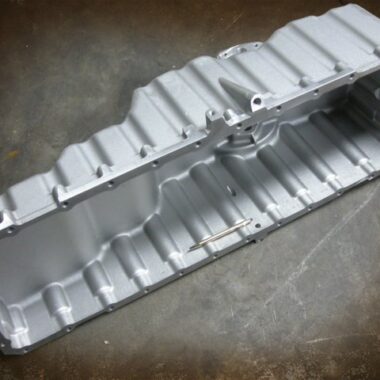Achieving Excellence in Light Weight Aluminum Spreading: Vital Advice
In the realm of aluminum accuracy, spreading and high quality are critical. From meticulously selecting the appropriate materials to refining pouring techniques and guaranteeing precise completing touches, accomplishing excellence in aluminum spreading demands a mix of knowledge and focus to detail.

Materials Choice
Picking the ideal materials is extremely important in guaranteeing the success and high quality of your light weight aluminum casting tasks. The selection of materials dramatically affects the final properties of the casted items, including toughness, sturdiness, and general top quality. When choosing materials for light weight aluminum casting, it is vital to think about factors such as the sort of light weight aluminum alloy, the desired mechanical homes, and the casting approach being used.
Light weight aluminum alloys are typically utilized in spreading as a result of their lightweight nature and excellent mechanical homes. The choice of the specific alloy depends upon the application needs, with options varying from high-strength alloys suitable for architectural elements to corrosion-resistant alloys for aquatic environments. Comprehending the attributes of various light weight aluminum alloys is crucial for picking one of the most appropriate one for your job.
In addition, the casting technique employed, whether it be sand spreading, pass away spreading, or investment spreading, likewise influences material selection. Each casting approach has its own requirements in regards to material fluidity, thermal conductivity, and mold and mildew compatibility. By very carefully taking into consideration these variables, you can make certain that the products chosen are customized to meet the certain requirements of your aluminum casting job.
Mold Preparation
In the realm of aluminum casting, the thorough prep work of molds stands as a vital precursor to the real casting process. It is vital to cleanse the mold and mildew completely to get rid of any kind of dirt, deposit, or previous spreading remnants that can compromise the brand-new cast.
Following, applying an ideal mold layer is essential to promote the release of the actors light weight aluminum and boost the surface area finish of the component. The sort of layer made use of will depend on factors such as the complexity of the mold, the desired surface coating, and the spreading material. Furthermore, proper venting and gating systems must be incorporated right into the mold design to enable the smooth flow of liquified light weight aluminum and protect against the development of air pockets or issues in the cast part.
Melting and Pouring Methods
To attain successful light weight aluminum casting, understanding efficient melting and putting techniques is vital for guaranteeing top notch and precise outcomes. go to this site The melting procedure is a crucial step in aluminum casting, where the metal is heated up to its liquid state.
As soon as the aluminum gets to the wanted molten state, correct pouring techniques need to be used to move the metal right into the mold and mildews. The rate and consistency of the put are important factors in achieving uniform dental filling of the mold and mildew cavity and reducing the threat of problems like air entrapment or incomplete casting. Gravity putting, low-pressure spreading, or centrifugal spreading approaches can be used based upon the details needs of the task.
Air Conditioning and Solidification Control
Accomplishing specific control over the air conditioning and solidification process is important in aluminum casting to maintain the honesty and quality of the final casted items. Correct air conditioning and solidification control help avoid problems such his response as porosity, hot tears, and shrinkage that can jeopardize the mechanical residential or commercial properties of the casted aluminum elements.
One vital element of cooling and solidification control is the design and placement of cools. Cools are metal objects purposefully put in the mold to soak up warmth swiftly from details locations of the casting, promoting consistent solidification and lowering the chance of issues. Furthermore, managing the air conditioning price by changing the mold's material, layout, and the application of protecting layers can affect the microstructure and mechanical buildings of the last casting.
Moreover, surveillance and controling the cooling procedure with the use of thermocouples and computer simulations enable real-time changes to enhance cooling prices and solidification patterns. By implementing these strategies, factories can enhance the top quality and consistency of their light weight aluminum spreadings, meeting the rigorous demands of numerous industries.
Finishing and Quality Assessment
Correctly implemented completing and top quality evaluation processes are indispensable in making certain the overall honesty and reliability of light weight aluminum spreadings, building on the precise air conditioning and solidification control methods used throughout the spreading procedure. Ending up strategies such as grinding, sanding, and brightening assistance get rid of excess material, smooth harsh surface areas, and boost the castings' last look. These processes not only enhance browse around this web-site the aesthetic charm yet also make certain dimensional precision and performance.

Verdict
Finally, achieving quality in light weight aluminum casting calls for careful factor to consider of products selection, precise mold and mildew preparation, precise melting and pouring strategies, efficient cooling and solidification control, along with extensive completing and quality examination processes. By complying with these crucial tips and methods, manufacturers can guarantee the manufacturing of high-quality aluminum spreadings that satisfy market criteria and consumer expectations.
When selecting materials for aluminum casting, it is vital to consider variables such as the type of aluminum alloy, the wanted mechanical buildings, and the casting method being made use of.
Furthermore, the spreading approach used, whether it be sand spreading, die casting, or investment casting, likewise influences material choice.In the realm of light weight aluminum casting, the careful preparation of mold and mildews stands as an essential forerunner to the real spreading procedure. Gravity pouring, low-pressure casting, or centrifugal casting methods can be utilized based on the specific requirements of the task.
